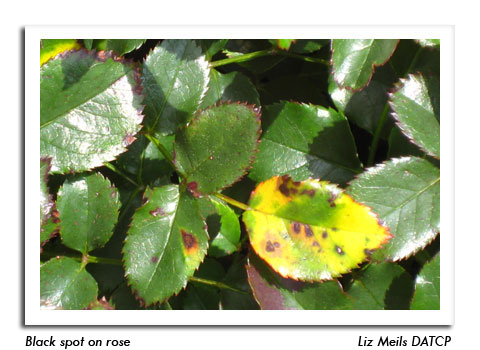
 |
|
|
Nursery & Forest
Volume 58 Number 4 Date 05/23/2013 HOLLYHOCK RUST - Nursery inspectors found this rust disease on several varieties of hollyhock and mallow in Door and Washington counties. Symptoms include numerous light yellow spots on the upper leaf surfaces and orange-brown rust pustules on the leaf undersides. Hollyhock rust worsens throughout summer, killing most of the foliage on infected plants by early fall. The disease cycle can be broken by cutting stalks back to ground level in the fall and destroying all infected plant material. COLD DAMAGE - Shrubs, perennials and annuals are showing the effects of the cold nights over the past few weeks. The damage is attributed to exposure to cold temperatures during the early growth stages. The problem is evident statewide. Reports from the northeast and southeast regions indicate a wide variety of plants have been affected to some degree, including bleeding heart, boxwood, hosta, lilac, New Guinea impatiens, roses and many others. BLACK SPOT ON ROSE - Symptoms of this fungal disease were observed on several rose cultivars at garden centers in Walworth and Washington counties. Diagnostic characteristics are small, round black spots on the leaf surface which enlarge and cause leaves to turn yellow and prematurely fall. Development of this rose disorder is favored by humid, wet conditions and can be alleviated by increasing air circulation and removing infected leaves and debris. CROWN RUST - The orange-yellow cluster cups that produce spores capable of infecting oats, rye and other grasses are appearing on buckthorn leaves in Columbia County. Heavy amounts of rust inoculum on the buckthorn host may indicate greater rust potential for oats this year if proper conditions for infection should develop. BALSAM TWIG APHID - Nursery inspectors report that the buds of balsam firs in Dunn, Pierce and St. Croix counties are beginning to swell and break dormancy. The appearance of wingless female balsam twig aphids coincides with bud break, suggesting that the aphids will soon emerge and begin feeding on the buds. Controls must be initiated promptly in nurseries and Christmas tree plantings that had severe infestations of this pest last season. -- Liz Meils, DATCP Nursery Inspector 



|
|
|